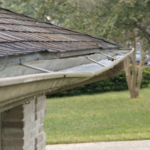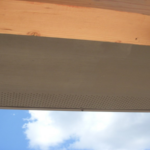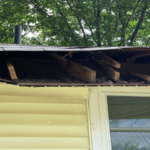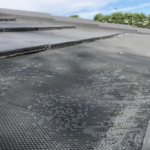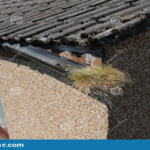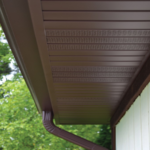- Water damage to your gutters: Over time, the weight of the water can cause your gutters to sag or even break.
- Water damage to your home: If water is spilling out of your gutters, it can damage your home’s fascia and soffit (the board that runs along the edge of your roof). In extreme cases, it can even seep into your home’s interior, causing mold and water damage.
- Pests: Standing water is a breeding ground for mosquitoes and other pests. If you have water in your gutters, you’re more likely to have pests in your home.
- Cleaning your gutters: This is the simplest solution, but it’s not always effective. If your gutters are filled with debris, cleaning them may not be enough to fix the problem.
How much standing water is acceptable in a gutter?
There is no definitive answer to this question as it will depend on various factors such as the type of gutter, the climate, and the purpose of the gutter. However, as a general rule of thumb, you should aim to have no more than a couple of inches of standing water in your gutter at any one time. If you live in an area with a lot of rainfall, you may need to empty your gutters more frequently to prevent them from overflowing.
Why is there standing water in my gutter not clogged?
Finally, it’s also possible that there is some sort of blockage in your downspouts. This blockage could be anything from leaves and twigs to more serious debris like sticks and stones. If there is a blockage in your downspouts, the water in your gutters will have nowhere to go and will again begin to pool.
Is it normal for gutters to overflow in heavy rain?
Most gutters are designed to handle a normal amount of rainfall. However, during a heavy downpour, it is not uncommon for gutters to overflow. This is usually not a cause for concern, as the excess water will eventually drain away. However, if you notice that your gutters are regularly overflowing, it may be a sign that they need to be cleaned or replaced.
How do you keep water from pooling in gutters?
- Make sure that your gutters are properly sloped.
- Install gutter guards or screens.
- Clean your gutters regularly.
How do you know if gutters are full?
There are a few ways to tell if your gutters are full. One way is to simply look at them and see if any leaves or debris are sticking out. Another way is to use a garden hose to test the flow of water. If the water flow is slow or nonexistent, then your gutters are probably full.
What’s considered standing water?
Standing water is defined as water that is not moving. This can include water that is pooled, stagnant, or otherwise not flowing. Standing water can be a breeding ground for mosquitos and other pests, and can also be a health hazard if it is contaminated.
What happens if gutters don’t drain?
If gutters don’t drain, water can build up and cause damage to your home. Gutters are designed to drain water away from your home, so if they’re not draining properly, it can cause all sorts of problems. Water can seep into your home, causing mold and mildew to grow. It can also cause wood rot, which can lead to serious structural damage. In extreme cases, it can even cause your foundation to crumble. So if you notice that your gutters aren’t draining properly, be sure to have them fixed as soon as possible.
How can I make my gutters drain better?
- One way to make your gutters drain better is to regularly clean them out. This will ensure that any debris that has accumulated in the gutters is removed and that the gutters are able to function properly.
- Another way to improve the drainage of your gutters is to make sure that they are properly installed. This means that the gutters should be sloped slightly so that water can easily flow through them.
- If you live in an area with a lot of trees, it is also important to regularly clean the gutters and downspouts to remove any leaves or other debris that may be blocking the flow of water.
- Finally, you can also add some additional features to your gutters to help with drainage. For example, you can install gutter guards or install a gutter drain system. These additional features can help to ensure that your gutters are able to drain properly.
How do you empty gutters?
- First, you need to gather your supplies. You will need a ladder, a garden hose, a tarp, gloves, and a bucket.
- Second, you need to set up your ladder. Make sure that it is placed on firm ground and that it is the correct height for your gutters.
- Third, you need to start at one end of the gutters and use your garden hose to flush out any debris. Be sure to move the hose around to get all of the debris out. Once you have finished with one section, move the ladder and repeat the process until all of the gutters are clean.
Final Talk
No, it is not ok to have standing water in gutters. Gutters are designed to channel water away from your home and if they are filled with water, they can’t do their job. Additionally, standing water in gutters can be a breeding ground for mosquitoes and other pests. If you have standing water in your gutters, be sure to clean it out as soon as possible.



